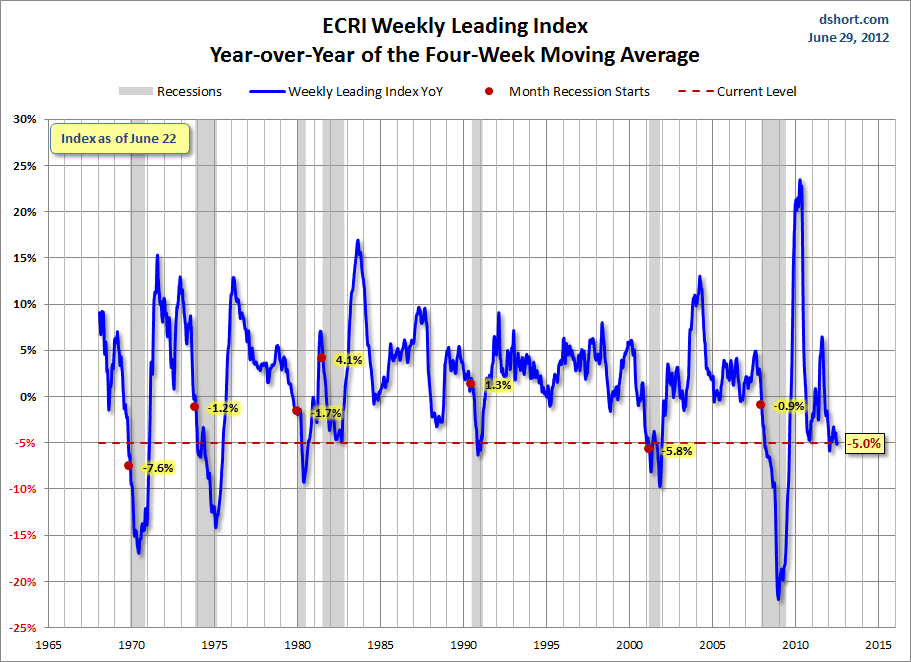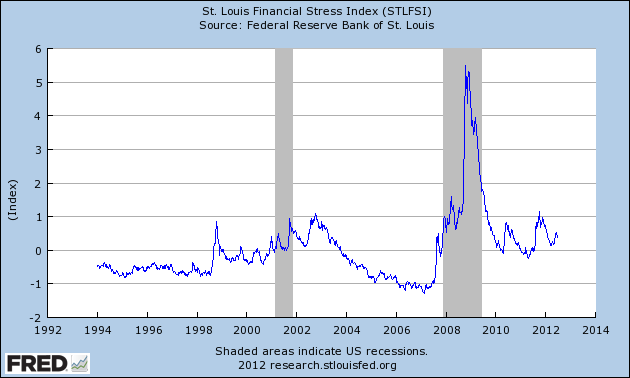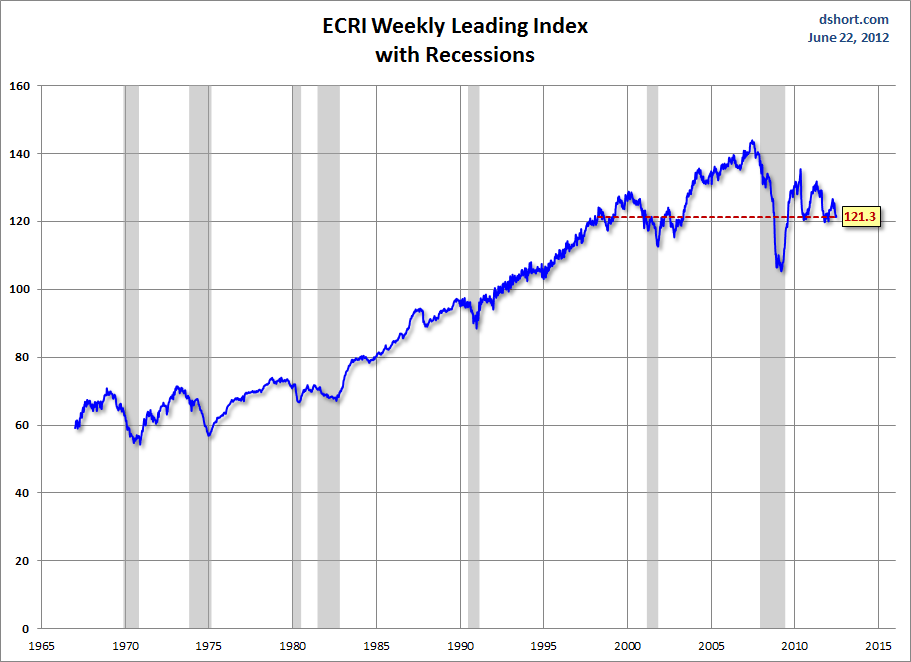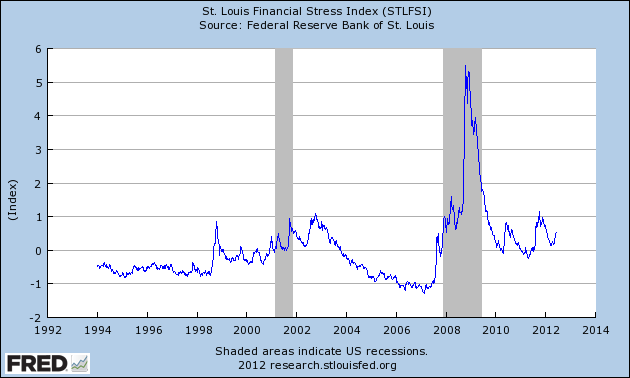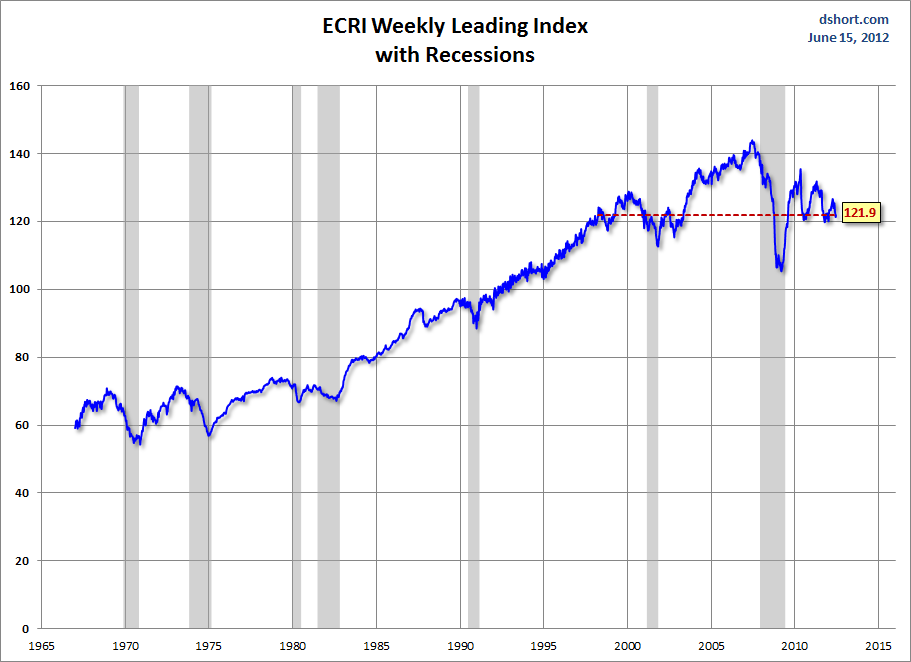As I stated in my July 12, 2010 post ("ECRI WLI Growth History"):
For a variety of reasons, I am not as enamored with ECRI’s WLI and WLI Growth measures as many are.
However, I do think the measures are important and deserve close monitoring and scrutiny.
The movement of the ECRI WLI and WLI, Gr. is particularly notable at this time, as ECRI publicly announced on September 30, 2011 that the U.S. was “tipping into recession,” and ECRI has reaffirmed that view since, including a notable statement on March 15 (“Why Our Recession Call Stands”) as well as various interviews and statements the week of May 6, including:
Bloomberg video, May 9: ”Lakshman Achuthan on Renewed U.S. Recession Call: Video”
ECRI, May 9: ”Revoking Recession: 48th Time’s The Charm?”
Wall Street Journal video, May 9: “Free Market Economies Have Business Cycles”
ECRI, May 11, “Rising GDP Doesn’t Rule Out Recession.”
Below are three long-term charts, from Doug Short’s blog post of June 29 titled “ECRI Recession Call: Weekly Leading Index Up Fractionally.” These charts are on a weekly basis through the June 29 release, indicating data through June 22.
Here is the ECRI WLI (defined at ECRI’s glossary):
(click on charts to enlarge images)
-
This next chart depicts, on a long-term basis, the Year-over-Year change in the 4-week moving average of the WLI:
-
This last chart depicts, on a long-term basis, the WLI, Gr.:
_________
I post various economic indicators and indices because I believe they should be carefully monitored. However, as those familiar with this blog are aware, I do not necessarily agree with what they depict or imply.
_____
The Special Note summarizes my overall thoughts about our economic situation
SPX at 1362.13 as this post is written

